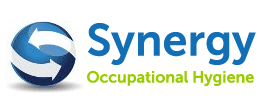Hazardous Substances in the Workplace: What You Need to Know
In many industries, hazardous substances in the workplace are part of the job. But exposure to dangerous chemical substances and harmful materials can pose serious risks to health if not properly managed. Under the Control of Substances Hazardous to Health (COSHH) Regulations 2002, it is vital for employers and workers to understand how to identify, handle, and reduce risks associated with hazardous substances.
This blog answers common questions such as when can chemicals be harmful? and what hazardous substances can cause illness? It provides a useful list of hazardous substances to raise awareness and encourage safer working practices.
What Are Hazardous Substances?
Hazardous substances are any materials or products that can cause harm to health. This includes:
- Dangerous chemical substances
- Products that contain chemicals
- Dusts, fumes, and vapours
- Biological agents (e.g. germs, bacteria or viruses)
- Mists, gases, and liquids
- Nanotechnology
If a substance has a warning label such as toxic, corrosive, irritant, or harmful, it is likely to fall under COSHH regulation. However, COSHH also covers non-toxic substances that often arise from processing, such as flour dust and silica dust.
When Can Chemicals Be Harmful?
Chemicals can be harmful when:
- Inhaled (e.g. toxic fumes or dust)
- Swallowed (accidental ingestion)
- Absorbed through the skin (especially solvents)
- Injected through injury (e.g. needlestick injuries or splinters)
- Coming into contact with eyes or skin, causing burns or irritation
The risk increases with the frequency of exposure, duration, and concentration of the substance. So, when can chemicals be harmful?—whenever they’re not properly handled or controlled.
The Health and Safety Executive published EH40/2005 Workplace exposure limits to understand hazardous substance exposure limits – you can find this here.
What Hazardous Substances Can Cause Illness?
A wide range of harmful substances can cause both short and long-term health issues. These may include:
- Respiratory problems from inhaling dust, chemicals, or fumes
- Skin conditions like dermatitis from frequent contact with cleaning chemicals
- Cancer from prolonged exposure to certain solvents or carcinogens
- Infections from biological agents such as bacteria in healthcare or agriculture
So, what hazardous substances can cause illness? Anything from everyday cleaning products and flour dust to industrial chemicals, if not properly managed, can be a hazard.
Examples of Hazardous Substances
Some common examples of hazardous substances in the workplace include:
- Flour dust
- Silica dust from stone or concrete cutting
- Acids and alkalis used in cleaning or manufacturing
- Volatile organic compounds, aka solvents like white spirit or acetone
- Welding fumes
- Wood dust
- General dust
- Diesel exhaust emissions
- Pesticides and fertilisers
- Laboratory reagents
- Disinfectants and sanitisers
This list of hazardous substances is not exhaustive, but it gives a good idea of how widespread these risks can be across sectors. Not included in the list of hazardous substances, due to having their own regulations, are the following hazardous materials:
- Asbestos
- Lead
- Radioactive materials
What Physical Forms Do Hazardous Substances Come In?
Hazardous substances can take many forms. Understanding what physical forms hazardous substances come in helps in identifying risks and applying the right safety measures:
- Gases – e.g. carbon monoxide, chlorine
- Vapours – from solvents or petrol
- Liquids – such as bleach or paint stripper
- Solids – including powders, dust, or granules
- Mists and sprays – often from cleaning or pesticide application
- Fumes – metal fumes from welding or oil smoke
- Biological forms – like mould spores, viruses, or bacteria
Each form presents its own routes of exposure and health effects.
How to Stay Safe Around Harmful Substances
To protect yourself and others from harmful substances, follow these key steps:
- Follow COSHH risk assessments and procedures
- Read and understand safety data sheets
- Regularly monitor risks to understand and assess potential risks – especially important when new substances or working practices are introduced
- Use proper ventilation and extraction systems
- Wear appropriate personal protective equipment (PPE)
- Store chemicals safely and label them clearly
Employers must train staff and put control measures in place, while employees must use them properly.
Hierarchy of Control
The hierarchy of control is an important framework to decide what to do about harmful materials. The hierarchy of control states:
- Where elimination of a substance is possible, this must be the first control measure.
- If this is not possible, then using a less hazardous compound must be the next control measure.
- If neither of these control measures is possible, then employers should use engineering measures, such as LEV.
- In turn, if this is not possible, then administrative controls should be put in place. The aim of this should be to put in place procedural methods to control the hazards. If all of these methods are found to be ineffective, then finally, the exposure should be controlled using PPE.
COSHH Provides the Framework; Use it to Keep Your Workforce Safe
Understanding the risks posed by hazardous materials, dangerous chemical substances, and other harmful substances is vital in maintaining a safe working environment. COSHH exists to minimise these risks, but knowledge and good practice are just as important.
By knowing what hazardous substances can cause illness, recognising when chemicals can be harmful, and understanding what physical forms they come in, workers and employers can stay safe, healthy, and compliant.




